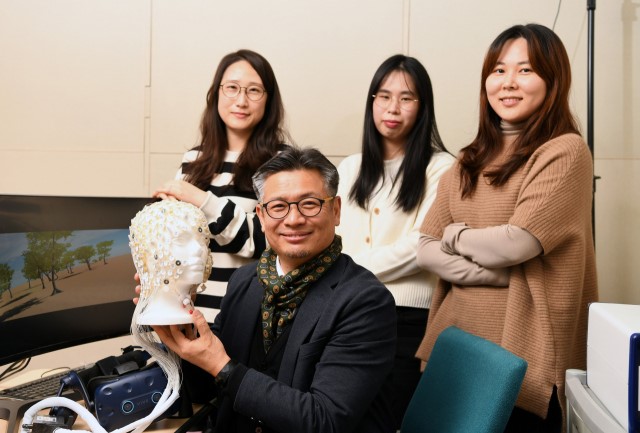The Korea Research Institute of Standards and Science (KRISS) said Thursday its researchers have successfully measured cyber motion sickness resulting from experiencing virtual reality (VR) by using brain waves.
The team, led by Senior Researcher Lim Hyun-kyoon, developed a method that quantitatively measures cyber motion sickness by observing 21 participants exposed to identical stimulation every week. After two trials, the result showed that a person’s Delta, Sita, and Alpha frequency range was steady in certain areas, including the head's frontal and central parts.
For people with severe motion sickness, the range of brain waves changes was bigger, the team said.

The research team has quantitatively analyzed how specific parts of the brain and certain brain waves change while experiencing VR. The study had provided a basis for objectively evaluating cyber motion sickness, unlike in the past when such sickness was mainly assessed by conducting surveys.
Virtual reality is advancing rapidly, used in various fields such as medical care, games, sports and education. VR is also highly utilized as it lets users indirectly experience medical technology, including surgery, rehabilitation and training. However, VR experts have pointed out a flaw in the comparatively-new technology as it increases not only VR concentration but also cyber motion sickness, as a person wears head-mounted display (HMD) goggles to experience VR.
Cyber motion sickness is a symptom of feeling dizzy and nauseous while watching the fast movement from a digital device's screen. When the user wears goggles and turns the eyes away, the motion sickness worsens as the user cannot catch up with the device's spinning speed, leading to screen delay and accumulating differences of eyes’ visual and body position information.
To minimize the sickness, VR developers must consider personal motion sickness from the beginning stage of content development.
“We plan to utilize the evaluation method on future content developments, grading motion sickness levels and using them for personalized content production,” Lim said. “We will continue to conduct additional research with extended subjects.”
The research study was published in Neuroscience Letters in February.

